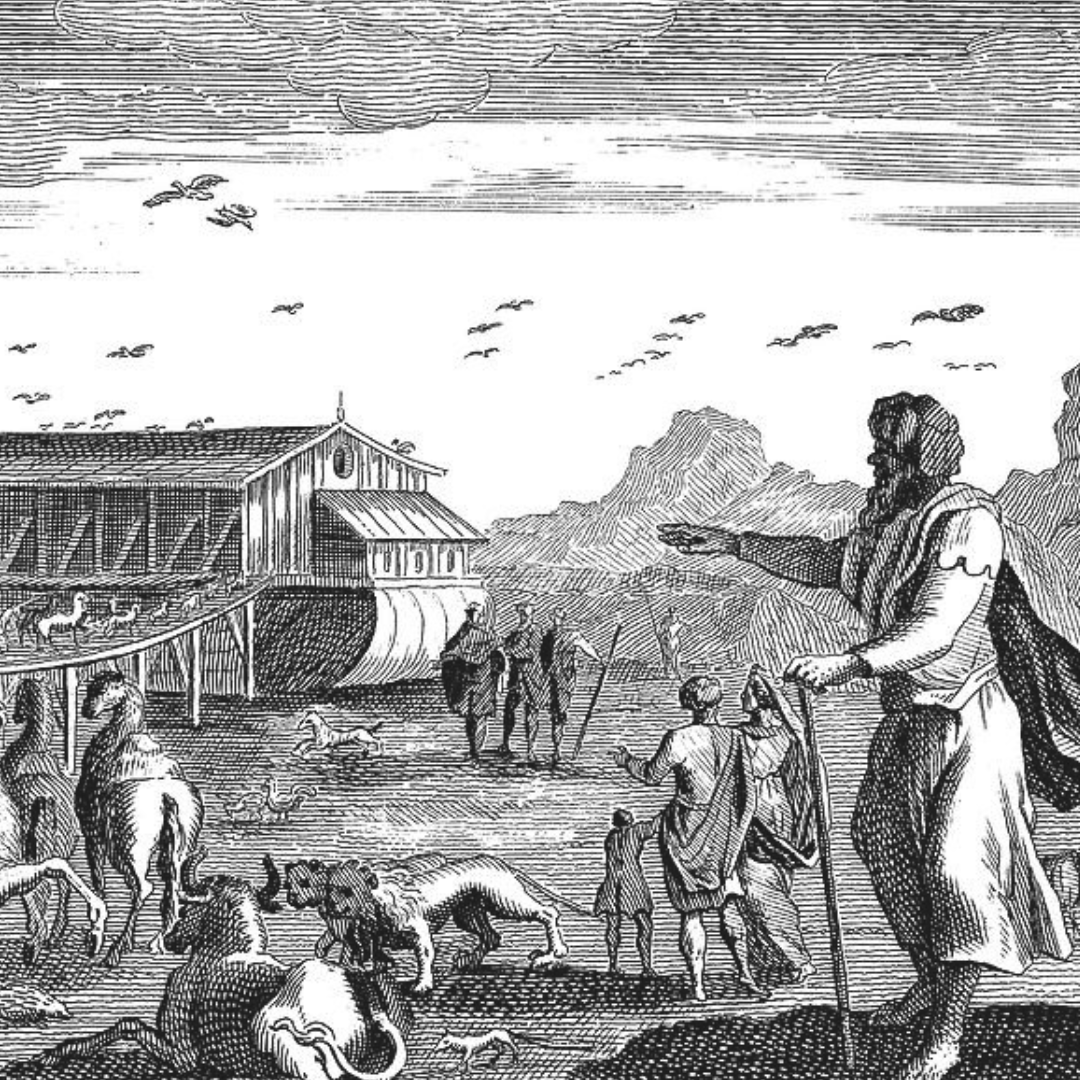
By Clement Harrold
July 11 2025
There are many different ways to define grace. One simple way of thinking about it is as a divine gift. The Catechism of the Catholic Church explains, “Grace is favor, the free and undeserved help that God gives us to respond to his call to become children of God, adoptive sons, partakers of the divine nature and of eternal life” (1996). Every hour of every day, God is sending us free gifts to help us on our journey back to Him. And throughout the Scriptures, He provides us with a host of symbols which help convey the beauty and the power of this amazing grace.
1. Wood
Already in the opening pages of the Bible, we have the tree of life, which serves as an image of the eternal union which Adam and Eve were called to enjoy with God (see Gen 2:9). Later on in Genesis, we have Noah’s ark, which many of the Church Fathers viewed as a powerful symbol of God’s grace: by the wood of the ark, humanity is rescued from the waters of death (see Gen 6). We can also think of the wood which Isaac carried when he went up Mount Moriah with his father Abraham (see Gen 22:6). The wood of Isaac’s sacrifice was itself a foreshadowing of the wood which Christ carried up Calvary some 2,000 years later. Of course, there is no greater symbol of grace than the wood of Christ’s Cross. As the Church proclaims in her liturgy every Good Friday, “Behold the wood of the Cross, on which hung the salvation of the world!”
2. Water
Water is the most common substance on the planet. Yet despite—or rather because of—this, it stands out in the Scriptures as a potent symbol of God’s life-giving grace. As the Catechism explains, “Since the beginning of the world, water, so humble and wonderful a creature, has been the source of life and fruitfulness” (1218). We see this in the narrative of Noah’s flood, when the waters prove to be a source not only of death but also of spiritual renewal. In the Exodus narrative, water again plays a central role both at the Red Sea and at the river Jordan. For the Church Fathers, these two bodies of water represented the two poles of the Christian life: we are immersed in the waters of the Red Sea at our baptism; this is followed by our earthly pilgrimage through the desert; and finally at the end of our lives we (hopefully) cross the river Jordan into the Promised Land of heaven. The Old Testament’s rich symbolism surrounding water is continued in the New Testament, particularly at the crucifixion when blood (signifying the Eucharist) and water (signifying baptism) flow from Christ’s side (see John 19:34).
3. Fire
In the Scriptures it’s not only water but also fire that conveys the saving presence and power of God. As the Catechism observes, “While water signifies birth and the fruitfulness of life given in the Holy Spirit, fire symbolizes the transforming energy of the Holy Spirit’s actions” (696). It was a pillar of fire which guided the Israelites by night during their sojourn through the wilderness (see Exod 13:31-32). Fire is also associated with the greatest prophets, including Elijah, who “arose like a fire, and his word burned like a torch” (Sir 48:1), as well as John the Baptist, who points forward to Christ as the one who “will baptize you with the Holy Spirit and with fire” (Matt 3:11). This fire imagery is picked up by Jesus Himself when He exclaims, “I came to cast fire upon the earth; and would that it were already kindled!” (Luke 12:49).
4. Cloud
It was a pillar of fire which guided the Israelites by night, but it was a pillar of cloud which guided them by day. Throughout the Scriptures, the divine presence is made known in the form of a cloud, as the Catechism explains: “In the theophanies of the Old Testament, the cloud, now obscure, now luminous, reveals the living and saving God, while veiling the transcendence of his glory” (697). The cloud appears with Moses on Mount Sinai (see Exod 24:15-18), and again at the tent of meeting (see Exod 33:9-10), and again with Solomon at the dedication of the Temple (see 1 Kgs 8:10-12). In the New Testament, the cloud likewise appears on various occasions, including at the Transfiguration. The Greek word used to describe how a cloud “overshadowed” Christ and His disciples on Mount Tabor is the same verb used by the angel Gabriel announcing to Mary that she will bear the God-man in her womb: “The Holy Spirit will come upon you, and the power of the Most High will overshadow you” (Luke 1:35).
5. Bread & Wine
Throughout both the Old and New Testaments, bread and wine feature prominently as symbols of God’s grace. Bread plays an important role in the life of God’s people, whether it be the manna which the Israelites received from heaven (see Exod 16), or the bread of the Presence which was kept continuously in the tent of meeting (see Lev 24), or the abundance of loaves which Jesus miraculous produces at the feeding of the 5,000 and 4,000 (see Matt 14:13-21; 15:29-39). Wine, too, is a frequent motif in the Scriptures as a symbol of divine joy and spiritual blessings (see Joel 2:24; 3:18; Amos 9:13-14). Jesus makes use of this imagery in the wedding at Cana, when He supplies the guests with an overabundance of the finest wine (see John 2:1-12). Of course, nowhere in the Bible do bread and wine symbolize divine grace more powerfully than at the Last Supper, when Jesus gives us His Body and Blood under the outward appearances of bread and wine (see Luke 22:19-20; cf. Catechism 1333-35).
Further Reading
Matthias Joseph Scheeben, The Glories of Divine Grace (TAN Books, 2023)
About Clement Harrold
Clement Harrold earned his master’s degree in theology from the University of Notre Dame in 2024, and his bachelor’s from Franciscan University of Steubenville in 2021. His writings have appeared in First Things, Church Life Journal, Crisis Magazine, and the Washington Examiner.













